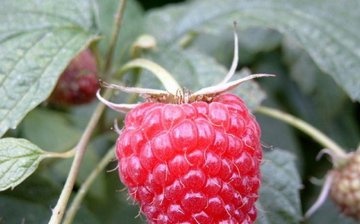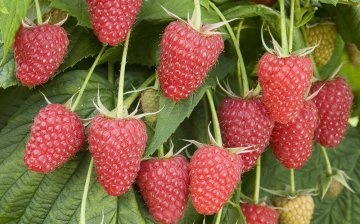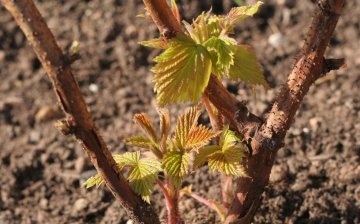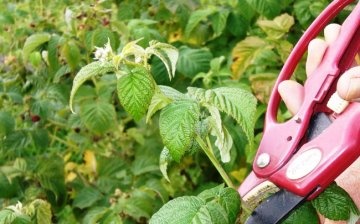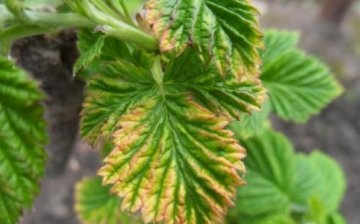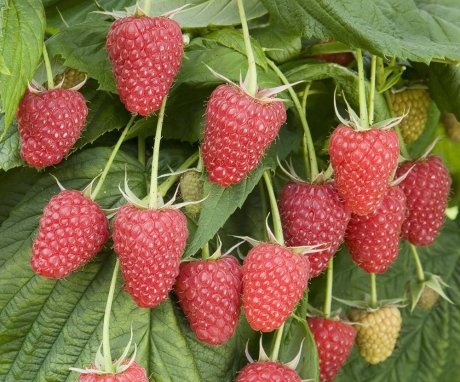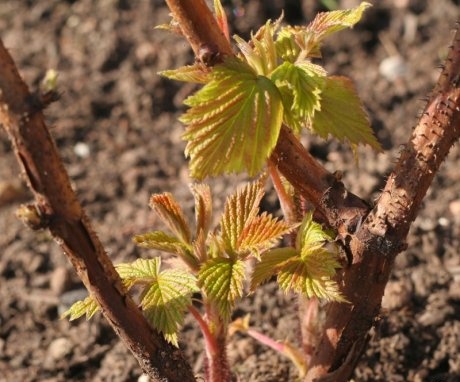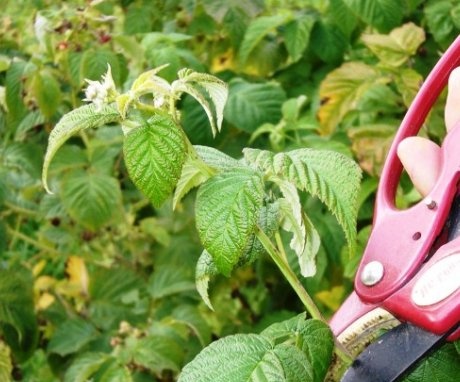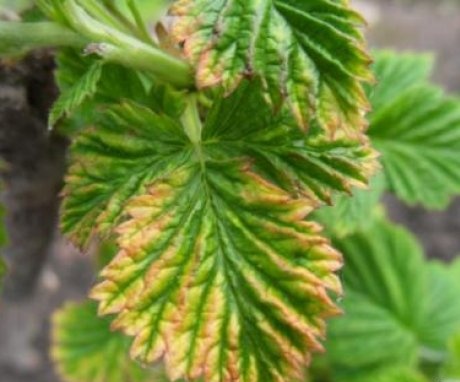Characteristics and agricultural techniques of the remontant variety of Polana raspberries
In 1991, the unpretentious and generous harvest Raspberry Polana (Polana) was released. Below is a description of the remontant variety and the features of care for obtaining a rich harvest twice a season.
Repaired varieties raspberries, in particular Polana, are capable of bearing fruit before the onset of frost. With proper care, there is a high probability of getting two harvests per season, however, the berry of the second harvest is much larger than the first. A distinctive feature of the Polana variety is its impressive shoots, the height of which reaches two meters in height. In the period of first fruiting, the variety enters in the middle of summer, forming rich red berries with a dense texture on the shoots.
Content:
- Characteristics of the variety
- Polana raspberry planting rules
- Secrets of proper care
- Overview of diseases and pests
Characteristics of the variety
The repaired raspberry variety Polana belongs to an early ripening and high-yielding crop. It is possible to harvest up to 12 tons of berries per hectare per hectare. Violet-blue strong shoots are distinguished by a slight thorniness, which makes picking the berries painless. Bushes branch well.
Fruits are formed exclusively on annual shoots. The berries are located from the middle to the top of the shoots. With sufficient lighting, up to 80% of the berries have time to ripen until the end of autumn fruiting. To extend the term of fruiting, the night shelter of the bushes is practiced, however, in this case, the berry loses sugar.
The berry of the pyramidal structure is distinguished by its density and glossy bright red color.
The fruit is large, juicy and sweet. The secret to getting a high-quality harvest is regular abundant watering, the emphasis is on time flowering, timely feeding and correct mulching.
Polana raspberry planting rules
Raspberries are planted at any time of the year except for the winter period. Well-lit places, protected from wind and high humidity, are allocated for the location of the raspberry tree.
Landing is done in two ways: pit or trench. The trench method is considered more suitable, because all useful trace elements are distributed evenly, which increases the quality of the crop.
Landing rules:
- The optimal soil is loamy or light loamy. Highly fertile soils with stable moderate moisture are also suitable.
- A mixture of organic matter (humus, compost) - up to 20 kg, with the addition of lime (300 g) and wood ash (500 g). The rate is calculated for one running meter. Fertile and breathable soil is poured over organic matter.
- The seedlings are buried in the ground up to the root collar, but if the soil is light and loose, the collar can be buried by 4-6 cm.
- The planted bushes are watered abundantly. Each plant has at least a bucket of water.
Raspberries with closed root system can be planted at any time, but autumn is considered the best time.
Secrets of proper care
Soil moisture must be maintained throughout the growing season. Do not allow waterlogging, otherwise there will be a threat of root decay and the death of the raspberry tree.
In a drought, each bush has two buckets of water at intervals of one to two days.
In the fall carried out feeding plants with organic matter (manure or compost).The norm is one bucket per adult raspberry bush. Strong bushes should be tied up. Otherwise, they will creep, closing the aisles or bending under the weight of the crop, which will complicate the care of the raspberry tree and increase the risk of disease.
In the spring, before the formation of ovaries, processing is carried out fugnicidal and insecticidal agents. It is necessary to carry out regular weeding, loosening and mulching of the soil under the bushes.
Overview of diseases and pests
Raspberry Polana, like all remontant varieties, is not afraid of invasion pests... And some diseases should be feared:
- Gray rot (botrytis). Fungal disease. It is characterized by the formation of dark or gray rotten spots on the leaves and berries. As a result, the fruits rot and become covered with a gray fluff, and when the disease is neglected, the raspberry bushes die. To reanimate the plants, you need to cut off and burn all infected berries and thin out the planting, removing old and weak shoots. To destroy the pathogens of gray rot, periodic treatments with chemicals are carried out: in the spring, before the formation of fruits, a solution of Bordeaux liquid is used to destroy the spores of the fungus; at the time of swelling of the kidneys, raspberries are treated with nitrofen and colloidal sulfur. The same processing shown after harvest; if the disease does not respond to treatment and spreads en masse, then the entire planting is removed and burned.
- Overgrowth (dwarfism). Popularly referred to as the "witch's broom". The cause is viruses carried by sucking insects and garden cutting tools. It is characterized by the growth of small shoots that do not yield a crop. The disease is characterized by focal spread. The fight consists in the destruction of the focus of the disease - uprooting and burning of the affected bushes.
The Polana raspberry variety is susceptible to bush growth fading, but it is resistant to berry rotting. The demand for the variety is explained by its unpretentiousness and resistance to diseases. And adhering to the elementary agrotechnics, farmers get a rich and tasty harvest twice a season.
More information can be found in the video:



